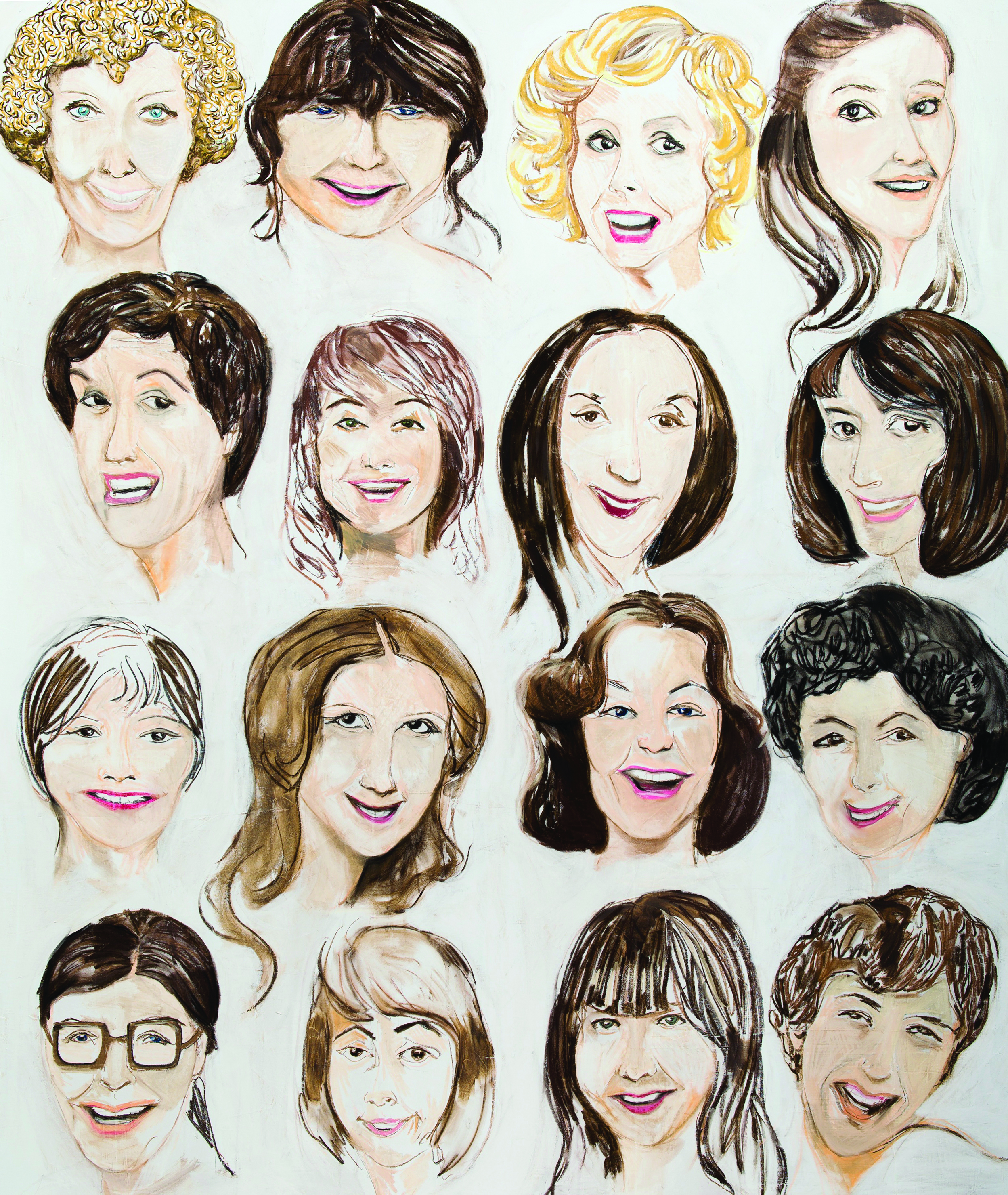Clarification: The original version of this article contained multiple typographical errors and was unclear as a result. According to Zuttermeister, it is the character of his sculpture that aids in making his work more relatable. Though the artists agreed that the exhibition naturally takes the form of four solo shows, they also said that their formation was natural.
Installment, painting, sculpture and still life. Four different art forms from four different artists, all encapsulated in one exhibition.
This is the set up of the Master of Fine Arts Exhibition #4, the final show in the series that both fulfills a degree requirement for the candidates and allows them to display their works in a museum-style setting.
The exhibition, which runs through Friday, will feature second-year MFA students William Kaminski, Becky Kolsrud, Marina Pinsky and David Zuttermeister.
Works from each artist will be displayed independently, creating an exhibition broken into four stand-alone galleries.
Kaminski’s installation, a towering steel frame fashioned into a harsh angled, bare-bone house-like structure, is a combination of physical apparatus and audiovisual expression, both original composition and repurposed media coverage.
According to Kaminski, a student in the new genres area, the piece explores the experience of growing up in a world with a constant feed of processed information.
“I am obsessed with news media, those cable channels. … News has become more than what the anchor is saying. It’s the way they are communicating it to you through the image they create and the way they look,” Kaminski said.
Kaminski also said he is interested in portraying the depth of this conflict between perception and actuality. For example, one part of the piece features a video of Kaminski reading a love letter to somewhat subdued musician Enya.
“It’s a very sexual response to a figure not known for her sexuality. It’s a relationship created by one person that the other doesn’t know about,” Kaminski said.
The humor in Kaminski’s work is also central to Kolsrud’s collection, which focuses on portraying the doubt, uncertainty and struggle of female comedians in a field mostly dominated by men.
According to Kolsrud, a student with a concentration in painting, awkwardness and the pressure to appeal to men forces women to abandon their true identity.
“A lot of young comedians forfeit their femininity and take on a masculine quality or they really act out (a caricature) of their femininity. The women I decided to portray fall into a more androgynous or ambiguous category,” Kolsrud said.
Kolsrud’s work is a study of the contrast between the fast-paced, in-the-moment aspects of stand-up comedy and the slow process of her art, which, according to the artist, is not only time-consuming to create but also to experience as a viewer. She said that the ambiguity of the characters in her pieces is central to allowing her to expand upon this idea.
Pinsky, a student specializing in still life, employs a method similar in its indirect approach. Though Pinsky’s medium is essentially photography, the subjects of her images are, in fact, objects so purposefully placed that the still lives invoke a sculptural sentiment.
Her central piece, an image of lemons intertwined with red bricks and placed fittingly in front of a grocery store deal mail-out, was the breakthrough for her collection, according to Pinsky.
“This was about my everyday life and the landscape of Los Angeles and I used that as a jumping-off point to make still lives that were more related to a landscape, a psychological landscape, a physical landscape, with objects that could point to other things in the world,” Pinsky said.
In keeping with the sculptural theme, Zuttermeister’s piece, “A Plan for the Future,” is a thoughtful combination of colors, materials and shapes, from architectural models to less recognizable molds.
“There is a narrative structure in here. … It’s like a post-modernist novel in that way. It’s a narrative structure that rolls over itself,” Zuttermeister, a sculpture student, said of the work, which is built like a path with detours and U-turns.
According to Zuttermeister, it is the character of his sculpture that aids in making his work more relatable.
“There is an immediacy in making sculpture. When you make a sculpture you have a thing that is real, tangible, and it’s there. I think that’s the thing that really attracts me to (sculpture),” Zuttermeister said.
Though the artists agreed that the exhibition naturally takes the form of four solo shows, they also said that their formation was natural.
“We came together because all four of us have this spirit of optimism and experimentation in our work. And we wanted our work to create new relationships from that as well,” Kolsrud said.
